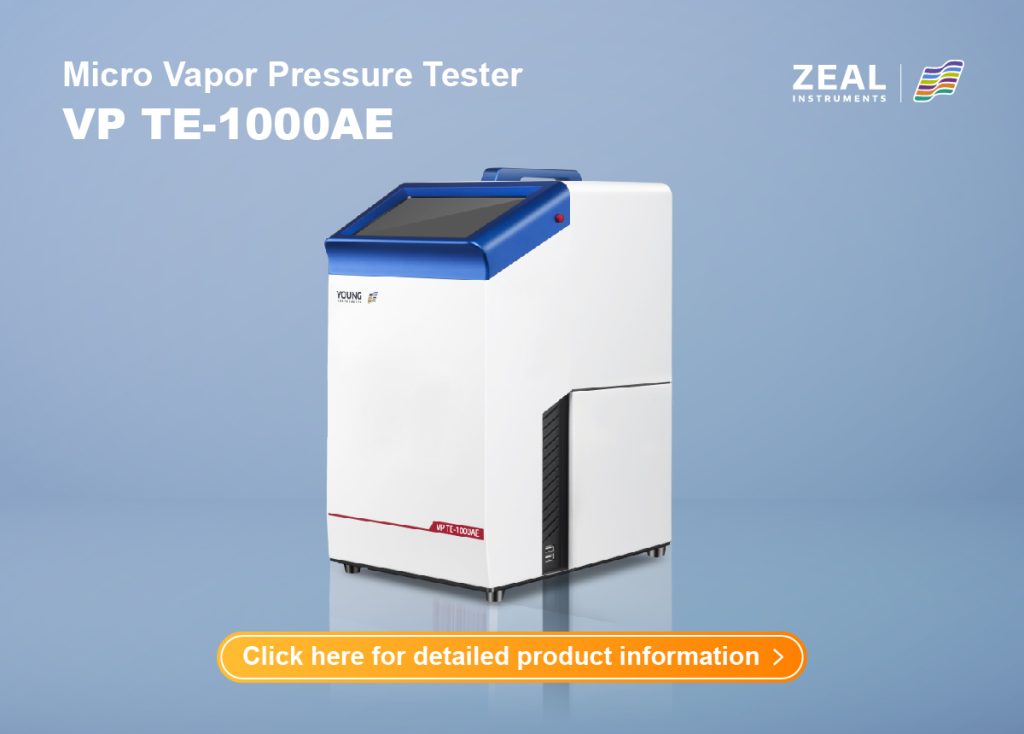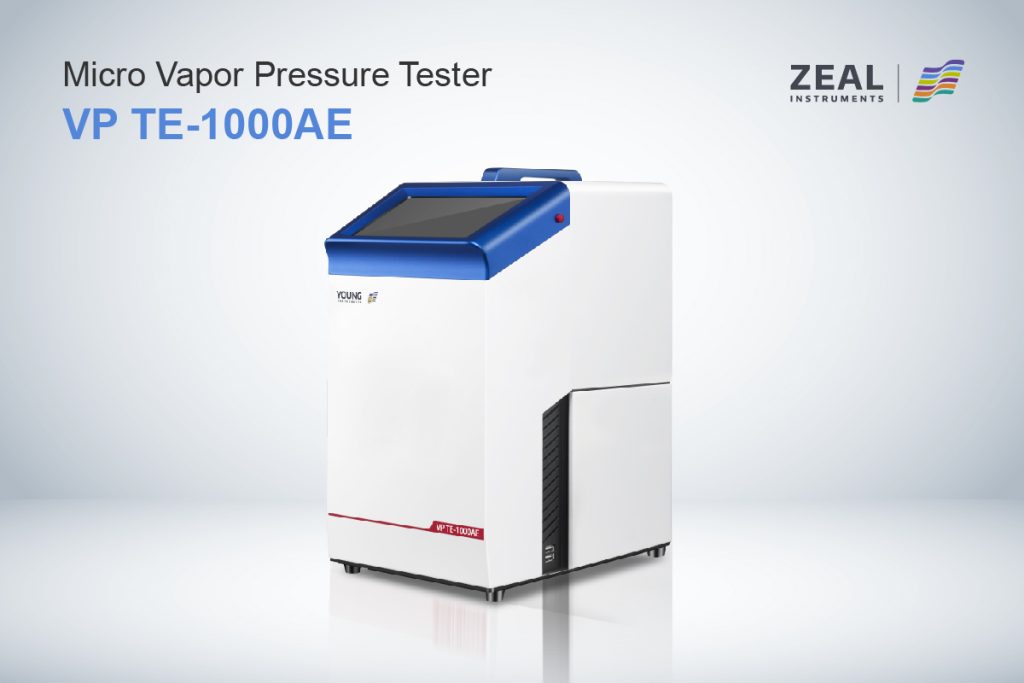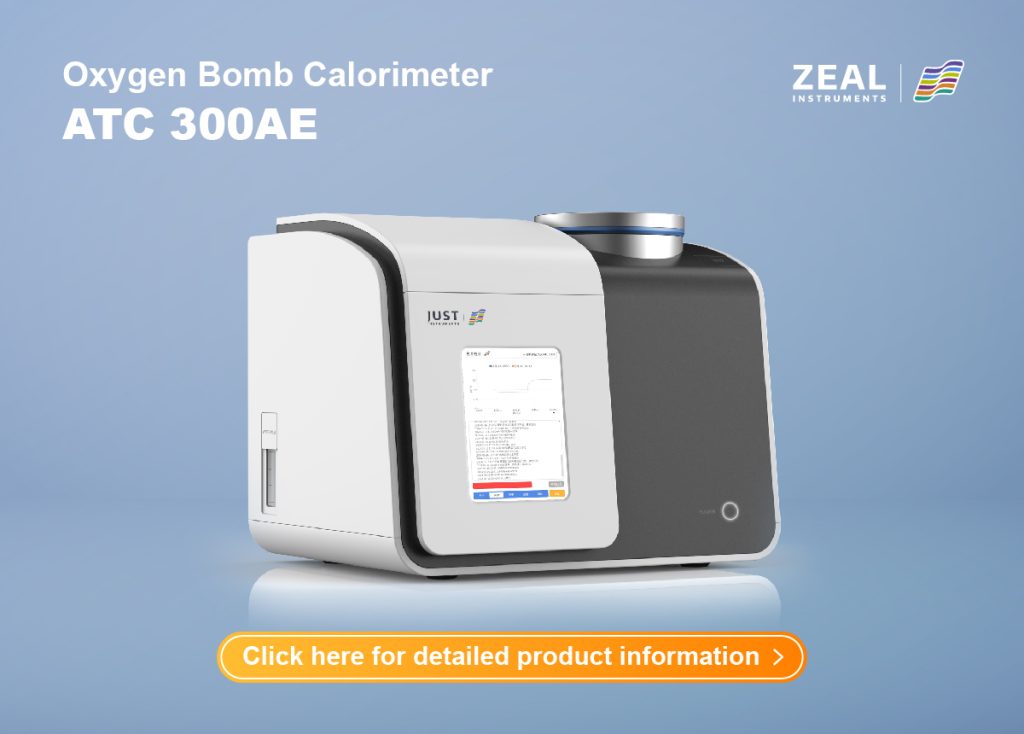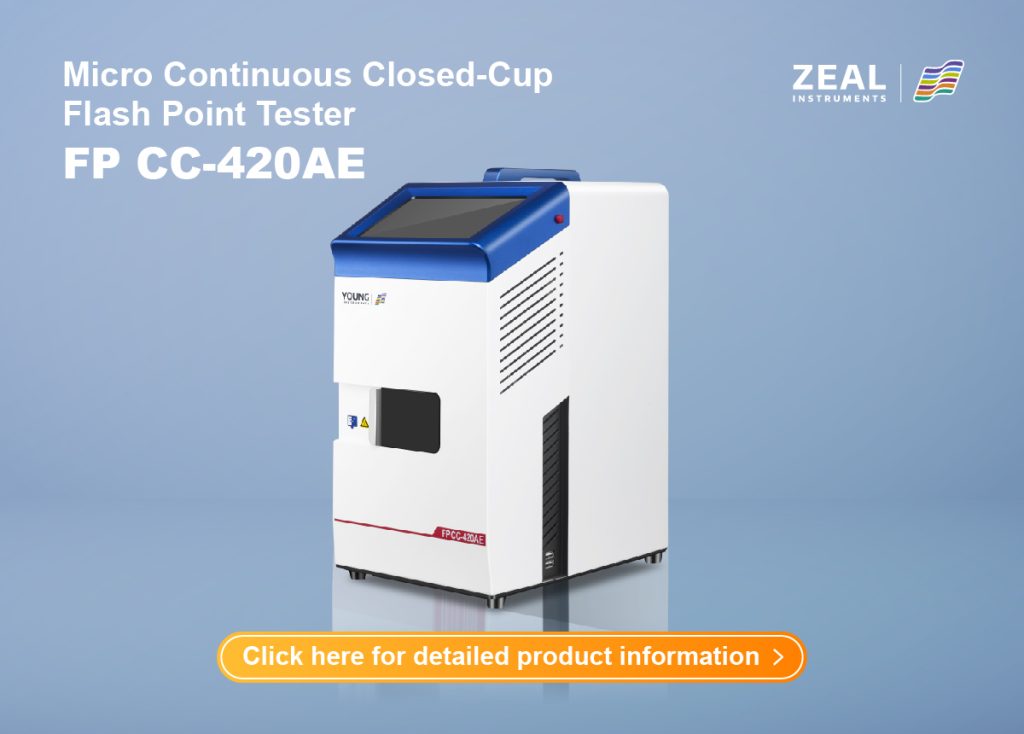Automatic Vapor Pressure Analyzer with Rapid Testing Capability
Looking for a precise and efficient solution for vapor pressure measurement? The Automatic Vapor Pressure Analyzer with Rapid Testing Capability might be the answer. This state-of-the-art analyzer employs an advanced three-stage expansion method, achieving an accuracy of ±0.1 kPa while reducing testing time by 50% compared to traditional methods. It accommodates a wide range of substances, including LPG, gasoline, and various chemicals. The fully automated system minimizes human error and ensures consistent results. With a user-friendly 7-inch color LCD touchscreen and USB connectivity, data management becomes straightforward. Ideal for both laboratories and production facilities, this analyzer meets stringent industry standards and supports regulatory compliance.

Instrument Principle and Application
Vapor Pressure and Its Importance
Vapor pressure is a crucial physical property of volatile liquids. In the specifications of volatile petroleum products, it is often defined to ensure appropriate volatility, which is essential for the normal operation of engine fuels. Vapor pressure also helps estimate the loss of light fractions in a sample, which is vital for quality control and performance assessment.
Three-Stage Expansion Method
The three-stage expansion method is a technique used to measure the vapor pressure of volatile liquid chemicals in a vacuum. This method is suitable for temperatures ranging from 0 to 100°C, with a gas-liquid ratio from 4:1 to 0.02:1, and vapor pressures not exceeding 500 kPa. The process involves using a piston to draw the sample into the test cylinder. The sample volume then expands to reach the specified gas-liquid ratio. The instrument performs three expansions to achieve vapor pressure equilibrium. By calculating the dissolved air partial pressure and the total vapor pressure at the sample temperature, the final vapor pressure is determined by subtracting the dissolved air partial pressure from the total vapor pressure.
Advantages Over Traditional Methods
Compared to traditional methods, the three-stage expansion method offers several benefits for determining the vapor pressure of petroleum products, hydrocarbons, and hydrocarbon-oxygen compound mixtures. It features faster measurement speeds, requires smaller sample sizes, and provides better precision. Additionally, it boasts a higher degree of automation, making it a more efficient and reliable option for modern laboratories and production environments.

Instrument Introduction and Parameters
Overview of the VP TE-1000AE
The VP TE-1000AE is an advanced instrument based on the triple expansion method for measuring liquid volatility. It is designed for the petroleum and chemical industries to accurately determine the vapor pressure of substances such as gasoline, aviation gasoline, hydrocarbon solvents, light petroleum distillates, and chemical reagents.
Key Features
The VP TE-1000AE requires only 1 mL of sample and delivers results within 10 minutes. It offers flexible settings and automatic detection of multiple temperature points, quickly compiling temperature-pressure reference charts. A unique cleaning method effectively controls sample cross-contamination, enhancing detection efficiency and precision. The maintenance-free measuring chamber is suitable for high-intensity testing tasks, ensuring reliable and consistent performance. User hierarchical management allows control of accounts at different levels, and the USB plug-and-play interface, along with an optional thermal printer, facilitates convenient data management.
User-Friendly Design
This instrument features a 7-inch color LCD touchscreen that dynamically displays the experimental process, making it easy to learn, understand, and operate. The user-friendly human-machine interaction simplifies the operation, ensuring that users can quickly adapt to the system. The standards it adheres to include SH/T 0769, SN/T 2932, ASTM D6378, SH/T 0794, ASTM D5191, GB/T 8017, ASTM D323, EN 13016-1, and IP 394, ensuring compliance with international and national testing protocols.
Technical Specifications
The VP TE-1000AE operates in environments ranging from 5°C to 40°C with a relative humidity of less than 85%. Its temperature range spans from 0 to 120℃, with an accuracy of ±0.1℃. The pressure detection range is 0 to 1000 kPa, with a resolution (sensitivity threshold) of 0.01 kPa. The instrument boasts repeatability of less than 0.3 kPa at 37.8℃ and 70 kPa, and reproducibility of 0.7 kPa under the same conditions. It requires a sample test amount of 1 ml, with approximately 10 ml needed for rinsing three times. The gas-to-liquid ratio ranges from 0.02:1 to 4:1. The VP TE-1000AE includes interfaces such as RS232, RJ45, and USB ports. It operates on a 220V/50Hz power supply, with a rated power of 150W. The dimensions are 225 mm x 290 mm x 390 mm, and it weighs 12 kg.
More Recommendations
Automatic Oxygen Bomb Calorimeter
The ATC 300AE Oxygen Bomb Calorimeter measures the calorific value of solid and liquid combustibles such as coal, coke, petroleum, black cement paste, and biomass fuel. Adhering to standards such as GB/T384, GB/T213, ASTM 4809, and ASTM D240, this device ensures precise and reliable calorific value determination, essential for various industries.

Advanced Features and Functionality
ATC 300AE has many advanced functions. Including automatic bomb lifting, serial number recognition, oxygen filling and release, oxygen pressure detection, and inner cylinder water volume measurement. The inner and outer cylinders automatically manage water inlet and outlet, without manual intervention, ensuring accurate results. Its semiconductor cooling water circulation system is equipped with a high-efficiency filter. It can monitor temperature trends and control the water temperature of heating, insulation, and cooling to quickly stabilize the system.
User-Friendly Design
Equipped with a touchscreen color LCD, the ATC 300AE offers stable software operation and real-time data curve display, making the testing process intuitive. The automatic data correction feature provides three calorific values—higher heating value, lower heating value, and bomb calorific value—correcting for heat produced by ignition wire combustion and the calorific values of nitric acid, sulfur, and hydrocarbons. Advanced serial port technology supports multi-control for multiple units, ensuring that experiments do not interfere with each other. The system automatically generates and saves charts and processes data, supporting historical data retrieval.
Technical Specifications
The ATC 300AE operates in environments between 15°C and 30°C with a maximum relative humidity of 80% (non-condensing). It uses cotton thread or ignition wire for ignition, with a temperature resolution of 0.0001℃. The isoperibol test mode takes less than 18 minutes using the conventional method and less than 10 minutes using the rapid method. It can measure calorific values up to 34,000 J with a precision of less than 0.10% and a fluctuation of less than 0.20%. The maximum oxygen bomb pressure is 300 bar, and the bomb is made of corrosion-resistant stainless steel and Hastelloy. The data storage capacity exceeds 10,000 entries.
Micro Continuous Closed-Cup Flash Point Tester
Introduction to FP CC-420AE
The FP CC-420AE Micro Continuous Closed-Cup Flash Point Tester is designed to measure the closed flash point of highly volatile light petroleum products, such as solvent oil and kerosene. Utilizing the continuous closed cup method, it determines the combustion hazard characteristics of various substances with high precision and efficiency.

Advanced Features
The FP CC-420AE employs an advanced continuously closed cup flash point test method, ensuring higher precision and efficiency. This method requires a small sample size, reducing testing costs and pollution. The operation is highly safe, featuring a continuously closed cup without an open flame. A built-in refrigerating module offers a wide range of flash point tests with short cooling times. The tester comes with preset standard test methods that can relate to other closed cup methods, facilitating comprehensive analysis.
User-Friendly Design
This fully automated tester provides automatic flash point calibration with atmospheric pressure and real-time display of temperature and pressure curves, making the test process more direct and informative. The results include a temperature-pressure rise curve for detailed flash point information. The USB port supports plug-and-play functionality, and an equipped thermal printer aids in convenient data management. The 7-inch color touchscreen supports Chinese input and offers direct, simple operations, enhancing user interaction and ease of use.
Technical Specifications
The FP CC-420AE operates in environments from 5°C to 40°C with a relative humidity of less than 85%. Its temperature control range spans from 0 to 260°C, with extensions to -30°C and up to 420°C for low and high-temperature modules, respectively. The temperature rise speed can be customized between 0.5°C/min and 12°C/min. Temperature measurement accuracy is maintained at ±0.1°C. The pressure testing range is 0 to 200 kPa, and the sample size required is 1mL or 2mL. It uses high-voltage electron ignition and features adjustable stirring speeds from 50rpm to 300rpm. The data storage capacity is 25,000 entries, with interfaces including RS232, RJ45, and USB ports. The rated voltage is AC220V/50Hz, and the power consumption is 300W.
Closing Thoughts
The Automatic Vapor Pressure Analyzer with Rapid Testing Capability is a cutting-edge instrument designed for accurate measurement of volatile liquids and gases. Utilizing an advanced three-stage expansion method, it delivers precise results and cuts testing time by 50% compared to conventional methods. This versatile analyzer handles a variety of substances, including LPG, gasoline, and chemicals. Its fully automated system reduces human error, boosts productivity, and ensures reliable results. Equipped with a user-friendly 7-inch color LCD touchscreen and USB connectivity, it simplifies data management. Perfect for both laboratories and production facilities, the analyzer adheres to rigorous industry standards and supports regulatory compliance, making it an indispensable tool for effective quality control.






































